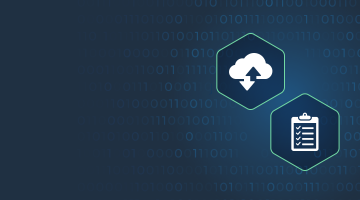

4 steps to writing an effective SRS document
Every business owner wants to develop their business as efficiently as possible, using the available resources and striving for more. This is especially true in the face of constant competition. Software is an essential element of business success. And it is extremely important to clearly define every specification of software requirements – after all, calculation and analysis are necessary for any business. The estimated cost of work and clearly defined project goals help your ship reach its destination. In this article, we will help you learn how to write requirements for software.
Software requirement documentation defines, in writing, all the capabilities, functions, and limitations of a software development project. SRS is a precisely written document that takes into account the wishes of all stakeholders, from project developers to clients, all elements (non-functional and functional), software features, real problems, and so on. This document is good support for the design and development processes.
The software requirement documentation is effectively used to generate graphs and cost estimates for designing, testing, delivery, verification, and more. The document also specifies the things that need to be checked during the validation and testing processes, and how to rank the functional elements. It serves to convey valuable information to several groups: development, quality assurance, operations, and maintenance. Using SRS, you can ensure that the requirements are met appropriately. And what is especially important for a successful business, it minimizes the overall time and costs.
Thus, researching and writing SRS is necessary to prepare for the designing and development of new software. With the help of this document, all project participants get a clear idea of how the application works, what tasks it solves, and what to expect from it.
Software requirement documentation is the foundation of your entire project and the correct development and management of your business.
Who are the users of SRS? The technical writer prepares the SRS documentation for the future product, but business analysts, project managers, software engineers, QA/QC engineers, investors, and clients are also involved in this process.
What is custom software requirements specification?
Software development is not complete without software requirement documentation, which includes not only the specification of software requirements but also all necessary documentation containing detailed information on the correct functioning of the software. This record is compiled by the company’s business analysts, as well as project managers and developers, who are intended to do the following:
In a nutshell, the SRS defines what the application should and should not do.
Why you should write SRS
Every business owner aims to calculate and analyze all the nuances of implementing a project, consider all the risks, draw up a schedule, and determine a budget. Therefore, it is necessary to write software requirement documentation! This document will help to estimate the costs, ensure the timely delivery of the project, determine the testing strategy, and help create the basis for effective improvements and corrections.
An SRS can act as a functional FSD specification document (the software part of a project) or a PRD (product requirement document – project hardware). A properly structured SRS is the best basis for drafting a contract between an engineering company and a client.
Let’s consider an SRS document for the email system as an example. It is safe to say that without quality SRS, some customers’ emails may simply not be delivered. Drawing up a document helps to write out your plan in detail and avoid mistakes.
Having a sample SRS document for online shopping is also important. In the constant competition for customers in the online shopping world, it is important to clearly spell out the requirements and consider all the details. A clear plan will help to achieve high-quality results.
An SRS example for a web application requires clearly stated information: who exactly will be using the application, what is the target audience, what is needed for the application to work efficiently, how to minimize unnecessary waste of time and resources.
What are the difficulties of using the SRS?
The main problem is the lack of understanding of the need to spell out clear requirements when starting cooperation. Some do not know how to write the SRS correctly and do not want to bother researching it. This is a mistake that will cause many problems later. To help you draw up a business plan, we will list some clear characteristics, which you can use to correctly draw up an SRS.
Please note that the DICEUS team consists of professional business analysts and project managers with extensive experience. We have created SRS for our clients working in various business domains. We can create a properly structured informative material with clear specifications of the software requirements that will show its functionality and spell out all the details. And in this article, we will help you write one on your own.
What are the characteristics of a great SRS?
What are the characteristics of excellent software requirement documentation? Our article is a kind of memo for those who need to compose an SRS. You can check your document against these characteristics and see whether you are on the right track. So, how to write software requirements? Here are the qualities of a good SRS document sample:
- Explicit. No vague, unclear wording. Utmost simplicity and clarity.
- All requirements must be easily measurable so that all specifications can be verified, avoiding fatal errors in the future.
- Complete. A software requirement specification document should contain information that is sufficient for both testers and developers. Based on this document, the team should check the product for compliance with the specified parameters, assess how it meets the client’s needs, and provide users with a ready product that will solve all their tasks.
- Viable. Budgets, deadlines, technologies, the current situation – all these parameters should be considered while drafting the document. Do not hope for a lucky accident like the situation on the market changing radically, analyze the realistic situation now and in the near future.
- Flexible. When drawing up a document, it is important to include the possibility of updating. There should not be a lot of these changes, but you still need to consider the variability of the environment. The software requirement specification document must consider the variability of the setting and be flexible to changes.
- Verifiable. Exact requirements that are clear to all team members and available for review are the basis for correct communication between all project participants. Employees should be able to refer to the document in their comments and reports, in product discussions. Each user needs access to the main document, and all changes and improvements should be instantly communicated to other users.
- Consistent. Parts of the document should not contradict its main structure; everything should be as consistent as possible to make sure there is no discrepancy between the constituent blocks of the document.
- No implementation constraints. Software requirement documentation should be detailed so that you can calculate everything up to the completion of the product. However, it is also necessary to consider various nuances and leave some room for changes.
- Accurate. Requirements spelled out as precisely as possible, no ambiguity and subjectivity, no vague wording like ‘probably’, ‘better’, ‘the nearest’. Specifics only!
Examples of common mistakes to avoid
- Ambiguity: “The MVP product needs to be released as soon as possible.”
- Loopholes: “The app should load in 3 seconds, if possible.”
- Superlative degree: “It should be the best application in its class.”
- Subjectivity: “The user interface should be user-friendly.”
- Comparisons: “This app should be better than Slack.”
How to write software requirement documentation: 4 simple steps
So, how to write a software requirements specification? Creating a quality document is a task for true professionals. A competent document will help you avoid difficulties and foresee all the details in advance. This is very important for your business development. Here is a clear step-by-step guide to creating a document that will help you avoid risks in preparation.
Create an outline
An outline helps to structure the abundance of ideas, draw up a clear logical structure, and list the sequence of all actions. The best understanding is formed based on SRS samples. Here is our template for compiling software requirement documentation:
Hopefully, these software requirements document examples will help you create your own documentation. However, if you don’t want to learn how to write a SRS document, you may find a lot of templates.
Define the goals
A clear goal is a basis for future success. The business project requirements and the analysis of all key factors influencing the process will help you determine the goal. So how do you structure everything?
- Determine the volume of the product
- Describe the value this product offers to the company and the client
- Determine who will be using the software
Ask yourself the following questions:
- Why are we creating a new product?
- What is its main value?
- Who are our main competitors? Can we make a better product to compete with the best players in the market and win?
- What are the main requirements for the future project?
- Describe in detail how this will help the intended users.
Use and audience
It will be great if you make a list of the people who have access to the product: managers and coders, marketing representatives, customer representatives, and so on.
Scope and definitions
Business goals, benefits, key goals, and functional features of the project – write down everything you need for all participants of the product creation process to understand the tasks.
Add details to the requirements
All requirements for a project can be divided into high-level and low-level requirements.
Here are the high-level requirements:
- Goals, mission, and key issues
- Customer’s needs – all necessary functions
- Functional and non-functional system requirements
Here are the main low-level requirements:
- Market specifications
- Interested parties’ specifications
- User interface with good design
Functional requirements
A comprehensive description of the new system you are going to build and its main functions.
User story
System requirements, user-focused system. Estimate the acceptability for the user story: write down the balance and date of payment, as well as all other details.
Use case diagram
- Define a list of symbols for effective interaction of a user with the system.
- The system displays the interaction process.
- Actors are users who directly interact with the system and with each other.
- Objectives are results of use cases.
- Build effective customer engagement scenarios that will help you prevent discord and minimize problems in the sector.
- WBS (Work Breakdown Structure)
The main purpose of the SRS is to break large projects into smaller pieces that are much easier to manage. A separate team can work on each part. These actions will help to increase productivity and, in general, to establish business processes in the company.
Non-functional requirements or NFR
How to write software specification? It is important to consider the components of non-functional requirements:
- Accessibility – how the app works and functions
- Security – the way the information is protected
- Scalability – this ability to process large volumes of information
- Usability – how easy it is to access and use the application
- Performance – how exactly the application responds to user requests
- Reliability – how the application performs in each environment
- Get an SRS document approved
Everything should be agreed upon between the participants in the process who are supposed to interact with it. You can make a presentation for all parties, describing all stages of the general work in as much detail as possible.
Key components of an SRS document
How to create software requirement specification document? All key parameters should be considered.
Introduction
A good system requirement document example contains the following paragraphs in the introduction:
- Goal
- References
- Prerequisites
- Product overview
A software requirement specification sample includes a goal that must reflect the main functions of the system.
You need to clearly spell out all the terms and explain their meaning to ensure consistency between developers, managers, customers, etc.
References are the sources you refer to in compiling the document.
Overall description
This part of the SRS includes product features, perspectives, operating environment, design features, user documentation. The requirement specification document sample also takes into account analyst-generated diagrams (DFD), which are intended to visually demonstrate the specifics of interactions in the system.
The design constraints section contains constraints for the following parameters:
- coding standards
- programming language
- operating environment
System/Product features
This is a list of the main product features with names and detailed descriptions that include response sequences, implementation priorities, functional requirements, technical requirements, etc.
External interface
Interaction between product and environment (API, different data types, etc.).
Non-functional requirements
The structure of software requirement specification also includes requirements for safety and security specifications:
- Performance
- Safety
- Product quality
Appendixes
A glossary of some additional terms. Model descriptions and analysis diagrams.
Methods to collect information for SRS
SRS steps: where to start? How to prepare SRS document? With collecting and analyzing all available information. Here are the main methods for collecting information for a software requirement specification document:
- Brainstorming. A great way to connect with all key stakeholders and jointly develop an action plan.
- Poll. Standard or unique questions.
- Document analysis. You can (and we strongly recommend it!) study all the documents on this project that are available.
- Interface analysis. It is important to define the functions of the user interface and the back-end of the application.
- Prototyping. It answers the question of how exactly the product can work.
- Maps. A kind of hierarchy of ideas.
- Focus group. User feedback is extremely important for the correct drafting of the document.
- Requirements. This includes a discussion of cross-functional product requirements.
Benefits of great software requirements
What is SRS document? A well-written SRS document allows you to save time by avoiding errors and inaccuracies in interaction with all the main participants of the process.
A comprehensive document allows both the team working on the creation of the product and the client to analyze the current state, define goals and objectives, and agree on all the details. Since the main parties have access to the SRS, the design process is simplified. Unexpected redesign expenses are minimized.
Other things SRS helps to do:
- Improving the accuracy of cost and time estimates
- Facilitating the transition of software from development to the production stage
- Coordinating actions with all participants without wasting extra time
- Increasing the level of interaction between developers, customers, and managers
- Preventing costly late-stage replacement
- Reducing development effort and duplication of tasks
The SRS is an essential part of completing a software development project that describes all key goals, objectives, and requirements. This is a kind of roadmap that indicates a clear direction for all project participants so that the final product meets all users’ needs much as possible. The structure of SRS document must be clearly spelled out.
Without a well-written SRS before starting a project, it will be difficult to determine its end date, which can hinder work. The SRS document allows you to write out all the details, conduct a competitive analysis, and set clear project tasks, establishing interaction between all participants.
Creating an SRS document is a painstaking and time-consuming process. But we are sure that with our advice this task will not be all that daunting anymore.







